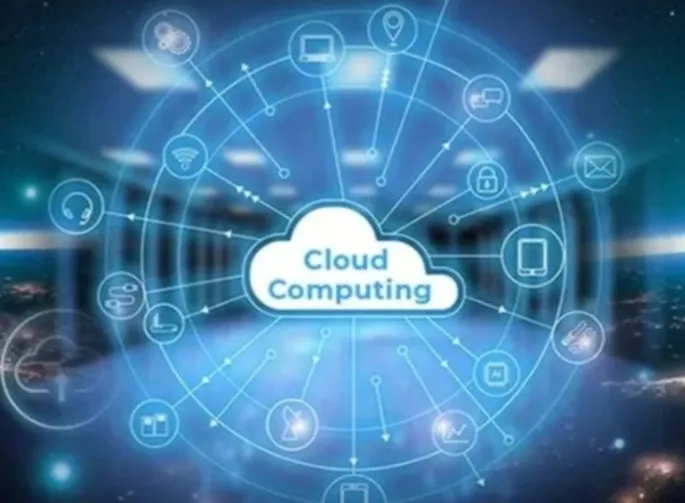In today’s interconnected world, the term “cloud computing” has become deeply embedded in our technological lexicon. It’s the engine behind many of the services we use daily, from streaming media and online collaboration tools to complex business applications and cutting-edge artificial intelligence. However, despite its widespread use, a precise and comprehensive definition of cloud computing can sometimes feel elusive. Understanding “what is cloud computing?” requires more than just a simple phrase; it demands an exploration of its core principles, models, and the fundamental shift it represents in the delivery of IT resources. The definition of cloud computing encapsulates a transformative approach where technology capabilities are accessed as services over the internet, moving away from the traditional reliance on physical hardware owned and managed by the end-user. This model has reshaped industries, empowered innovation, and altered the economics of IT. To truly appreciate its impact and potential, a thorough understanding of the definition of cloud computing is essential, breaking down its constituent elements and explaining its multifaceted meaning. This comprehensive guide aims to provide a detailed definition of cloud computing, explaining its core characteristics, exploring the various service and deployment models that form part of its definition, and highlighting the significant benefits that flow from this transformative model, offering a complete picture of the cloud computing definition and its importance in the digital age.
Toc
Exploring the Definition of Cloud Computing: What It Truly Means

To fully grasp the concept of cloud computing, we must begin by establishing a clear and universally recognized definition. This goes beyond anecdotal descriptions and delves into the core principles that define this modern approach to IT resource delivery. Understanding “what is cloud computing?” starts with examining its fundamental meaning.
The Foundational Cloud Computing Definition: IT as a Utility Model
The most widely accepted and foundational definition of cloud computing describes it as a model for enabling ubiquitous, convenient, on-demand network access to a shared pool of configurable computing resources (e.g., networks, servers, storage, applications, and services) that can be rapidly provisioned and released with minimal management effort or service provider interaction. This cloud computing definition emphasizes the delivery of IT capabilities as a service, much like accessing electricity, water, or other utilities from a provider, where you consume and pay for resources as needed rather than owning the entire infrastructure.
This fundamental definition of cloud computing marks a significant departure from traditional IT. Historically, organizations needed to invest heavily in purchasing servers, building data centers, installing software, and managing complex networks on their own premises. The cloud computing definition, in contrast, is centered on accessing these same capabilities remotely over the internet. The cloud computing meaning is tied to this utility model – where the underlying physical infrastructure is managed by a third-party cloud provider, and users access specific computing resources (servers, storage, software, etc.) as consumable services. This shifts the focus from asset ownership and maintenance to service consumption and management, fundamentally altering the economics and operational model of IT. When seeking the definition of cloud computing, this concept of IT as a flexible, on-demand utility accessed over a network is central.
Key Characteristics: Elements That Form the Comprehensive Definition of Cloud Computing
A comprehensive definition of cloud computing is further elaborated by understanding the key characteristics that distinguish cloud services from traditional IT hosting models. These attributes are not merely features but are integral components that collectively form the definition of cloud computing.
The National Institute of Standards and Technology (NIST) outlines five essential characteristics that are critical to the definition of cloud computing:
- On-Demand Self-Service: This element of the definition of cloud computing means that a user can provision computing capabilities, such as server instances or storage, automatically and without requiring human interaction from the cloud service provider. Resources are available instantly as needed.
- Broad Network Access: As part of the definition of cloud computing, this characteristic dictates that capabilities are available over the network (typically the internet) and can be accessed using a wide variety of client devices (laptops, phones, etc.) through standard mechanisms. This ensures widespread accessibility.
- Resource Pooling: The provider’s computing resources are pooled to serve multiple users using a multi-tenant model. Physical and virtual resources are dynamically assigned and reassigned based on user demand. Users typically don’t know the exact location of the resources but consume from a shared pool. This is a core part of the definition of cloud computing.
- Rapid Elasticity: This key element in the definition of cloud computing signifies that capabilities can be elastically provisioned and released, often automatically, to scale rapidly outward and inward to match demand. To the user, the available capabilities appear unlimited, allowing for quick scaling known as elasticity cloud.
- Measured Service: The definition of cloud computing includes that cloud systems automatically control and optimize resource use by leveraging a metering capability. Resource usage is monitored, controlled, and reported transparently, enabling a pay-as-you-go cloud model based on consumption
These five characteristics are fundamental pillars that collectively form the robust and detailed definition of cloud computing. They describe the essential operational attributes of cloud services, explaining how cloud capabilities are delivered and consumed, differentiating them from previous IT models and providing the necessary depth to understand “what is cloud computing?”. They represent the core cloud computing characteristics.
Why Grasping the Precise Definition of Cloud Computing is Crucial

Beyond simply knowing the term, having a precise understanding and being able to articulate the definition of cloud computing is vitally important in today’s technology-driven world for practical and strategic reasons. Understanding the clear definition of cloud computing empowers individuals and organizations to navigate the cloud landscape effectively.
Firstly, a precise definition of cloud computing enables accurate evaluation of cloud service providers and their offerings. The market is filled with services marketed as “cloud”; however, not all fully meet the fundamental characteristics outlined in the definition. Grasping the true definition of cloud computing allows users to identify genuine cloud services that provide the expected benefits like elasticity cloud and on-demand access, avoiding solutions that may not deliver the promised flexibility or scalability.
Secondly, understanding the definition of cloud computing is foundational for strategic IT planning and decision-making. Knowing exactly what cloud computing entails helps organizations identify which business processes or applications are most suitable for migration to the cloud, which cloud service models align with their needs and technical capabilities, and how to integrate cloud services with existing infrastructure. It informs critical decisions about IT budgets, resource allocation, and vendor selection.
Furthermore, a clear definition of cloud computing is essential for addressing crucial considerations like security and compliance. The shared nature of resources and the global reach inherent in the definition introduce specific security challenges and compliance requirements (such as data residency). A thorough understanding of the definition of cloud computing clarifies the respective responsibilities of the cloud provider and the user (the shared responsibility model), which is critical for implementing effective security controls and ensuring regulatory adherence. Without a firm grasp of the definition of cloud computing, organizations risk misjudging solutions, encountering unexpected issues, and failing to leverage the technology’s full potential securely and effectively. A precise definition of cloud computing is the essential first step towards successful cloud adoption and harnessing the benefits of cloud computing.
2. https://sanduocpham.com.vn/mmoga-the-foundation-of-modern-it-understanding-cloud-computing-aws/
4. https://sanduocpham.com.vn/mmoga-understanding-the-foundation-what-is-aws-cloud-computing/
Components of the Definition of Cloud Computing: Service and Deployment Models
To provide a more complete definition of cloud computing, we must also examine the various ways cloud capabilities are packaged and delivered (cloud service models) and the different ways the underlying infrastructure can be structured and located (cloud deployment models). These models are integral aspects that build upon the core cloud computing definition.
Understanding the Service Models: IaaS, PaaS, and SaaS in the Definition of Cloud Computing
Within the overarching definition of cloud computing, the concept is broken down into three primary cloud service models based on the level of abstraction provided by the cloud provider and the amount of management responsibility retained by the user. These models represent distinct ways of delivering cloud computing services.
-
Infrastructure as a Service (IaaS): A key component in the definition of cloud computing.
- Definition: IaaS provides virtualized fundamental computing resources over the internet. This is the bedrock of cloud infrastructure.
- What it Includes: Providers offer virtual machines (compute), virtual storage (block, object, file), and virtual networking components.
- User Responsibility: The user manages the operating system, middleware, applications, and data running on these virtual resources.
- Relevance: It embodies the utility model at the infrastructure level, allowing users to rent raw computing power and storage as a cloud computing service.
-
Platform as a Service (PaaS): Another crucial part of the definition of cloud computing.
- Definition: PaaS provides a platform and environment for developing, running, and managing applications without the user managing the underlying infrastructure or operating system.
- What it Includes: Providers offer application runtime environments, managed databases, development tools, and middleware as services.
- User Responsibility: The user manages their applications and data.
- Relevance: It abstracts away infrastructure management, enabling developers to focus on code and deployment, representing a specific type of cloud computing service.
-
Software as a Service (SaaS): A widely recognized element in the definition of cloud computing.
- Definition: SaaS provides complete, ready-to-use software applications delivered over the internet on a subscription basis.
- What it Includes: Providers manage the entire stack: infrastructure, platform, and the application itself.
- User Responsibility: The user primarily uses the application and manages their data within it.
- Relevance: It delivers functionality directly to end-users as a fully managed cloud computing service, requiring minimal user management effort.
Understanding these distinct cloud service models is fundamental to a complete definition of cloud computing. They clarify the different ways IT capabilities are packaged and consumed as cloud computing services, adding necessary detail to the core cloud computing definition. They are different layers within the overall definition of cloud computing.
Exploring Deployment Options: Public, Private, and Hybrid Cloud as Part of the Definition of Cloud Computing

In addition to the service models, the definition of cloud computing also encompasses different ways the cloud infrastructure can be deployed and managed. These cloud deployment models describe the location and structure of the cloud.
-
Public Cloud: A significant aspect of the definition of cloud computing.
- Definition: The public cloud infrastructure is owned and operated by a third-party cloud service provider and shared among multiple organizations over the public internet.
- Characteristics: High scalability, elasticity, pay-as-you-go cloud pricing, accessible to the general public.
- Relevance: It represents the most common and accessible form of cloud computing, where resources are consumed from a shared, vast pool.
-
Private Cloud: Also included in the definition of cloud computing.
- Definition: The private cloud infrastructure is provisioned for exclusive use by a single organization. It can be managed by the organization or a third party.
- Characteristics: High control, dedicated resources, enhanced security options, elasticity within the dedicated infrastructure.
- Relevance: It allows organizations to leverage cloud characteristics while maintaining dedicated infrastructure for specific needs (e.g., sensitive data).
-
Hybrid Cloud: A crucial modern component in the definition of cloud computing.
- Definition: A hybrid cloud is a combination of two or more distinct cloud infrastructures (private and public) that are bound together by technology allowing data and application portability.
- Characteristics: Balances control (private) with scalability and agility (public), supports workload mobility between environments.
- Relevance: It represents a flexible strategy that combines the benefits of private and public clouds, acknowledging diverse organizational needs.
Understanding these cloud deployment models adds another layer to the definition of cloud computing, clarifying the different ways the underlying infrastructure is structured. They are essential components that build upon the foundational cloud computing definition.
The Interconnected Nature of Service and Deployment Models

A complete definition of cloud computing recognizes that the cloud service models (IaaS, PaaS, SaaS) are not separate from the cloud deployment models (public, private, hybrid); they are different lenses through which to view the same phenomenon. Cloud computing services are delivered within one of the deployment models.
For example, Infrastructure as a Service (IaaS) can be consumed from a Public cloud (most common) or delivered within a Private cloud. Similarly, Platform as a Service (PaaS) can be offered by a Public cloud provider or implemented within an organization’s own Private cloud. Software as a Service (SaaS) applications are almost exclusively delivered from the Public cloud, although a dedicated instance for a single large enterprise might sometimes resemble a private deployment for that specific application. The Hybrid cloud model inherently involves using services from both private and public deployments.
4. https://sanduocpham.com.vn/mmoga-at-the-core-lets-define-cloud-computing/
5. https://sanduocpham.com.vn/mmoga-the-foundation-of-modern-it-understanding-cloud-computing-aws/
The ability to mix and match cloud service models within different cloud deployment models is a key aspect of the flexibility highlighted in the definition of cloud computing. An organization might use SaaS for email (public cloud), PaaS for developing new applications (public cloud), and IaaS for running legacy systems (private cloud), all as part of their overall cloud computing strategy which is informed by the comprehensive definition of cloud computing. Understanding this interplay is vital to fully grasp the multifaceted nature of the cloud computing definition.
The Impact and Benefits Flowing from the Definition of Cloud Computing
Understanding the definition of cloud computing is crucial because it directly relates to the powerful benefits that drive its widespread adoption. The advantages inherent in the definition of cloud computing are what make it such a transformative technology.
Core Advantages: How the Definition of Cloud Computing Highlights Business Benefits
The attributes and models outlined in the definition of cloud computing translate directly into significant advantages for organizations and individuals, effectively defining the core cloud computing benefits.
- Cost Efficiency: The definition of cloud computing, with its emphasis on pay-as-you-go cloud and reduced upfront infrastructure costs, directly highlights cost savings as a major benefit. Organizations avoid large capital expenditures and pay only for the resources they consume.
- Scalability and Elasticity: The characteristics of rapid elasticity and elasticity cloud within the definition of cloud computing mean resources can be scaled up or down quickly to match demand. This inherent scalability is a key benefit, allowing organizations to handle fluctuating workloads without performance issues or wasteful over-provisioning.
- Agility and Speed: The on-demand self-service and broad network access parts of the definition of cloud computing enable rapid provisioning and deployment. This speed and agility in getting IT resources accelerate development cycles and allow businesses to respond quickly to market changes, a significant benefit
- Reliability and Availability: While not always explicitly in the most basic definition, highly reliable cloud computing services with built-in redundancy across multiple data centers (part of the provider’s infrastructure in the public cloud definition) are a major benefit derived from the cloud model, often providing higher availability than individual on-premises setups.
- Focus on Core Business: By offloading the management of underlying cloud infrastructure (in IaaS) or even platforms and applications (in PaaS and SaaS), organizations can free up internal IT resources to focus on strategic activities and innovation, a key benefit stemming from the service models within the definition of cloud computing
These core advantages are inherent in the definition of cloud computing and are the primary drivers for its global adoption, making the definition of cloud computing synonymous with efficiency and innovation.
The Role of the Definition of Cloud Computing in Modern Technology and Business Strategy

Beyond its immediate technical definition and derived benefits, cloud computing has fundamentally reshaped the role of IT in business and is a critical enabler for many modern technological trends. Understanding the definition of cloud computing is key to understanding its broader impact.
The definition of cloud computing, with its focus on flexible, scalable, on-demand resources, has been instrumental in enabling digital transformation across industries. It provides the foundational infrastructure and cloud computing services necessary for businesses to build new digital products, enhance customer experiences, and optimize operations. The cloud computing meaning is intertwined with the ability to innovate rapidly and adapt quickly in a dynamic market.
Furthermore, technologies like Big Data analytics, Artificial Intelligence (AI), Machine Learning (ML), and the Internet of Things (IoT) rely heavily on the scalable compute, storage, and specialized cloud computing services that fit within the definition of cloud computing. The availability of these powerful capabilities on demand, defined by the characteristics of cloud, has democratized access to advanced technology, allowing organizations of all sizes to leverage tools previously only accessible to large enterprises. The definition of cloud computing thus describes the underlying enabler of much of the current technological revolution.
Moving Beyond the Definition of Cloud Computing: Practical Implementation
While having a clear definition of cloud computing is the essential first step, embracing the cloud involves significant practical implications for organizations. Moving beyond the definition of cloud computing requires strategic planning and operational adjustments.
Adopting cloud computing services impacts IT strategy, procurement, and financial planning. Organizations must transition their IT staff’s skills from managing physical hardware to managing and optimizing cloud computing services within potentially complex deployments like hybrid cloud. Security becomes a paramount concern, requiring a deep understanding of the shared responsibility model cloud providers use and implementing robust cloud security measures to protect data within the framework provided by the definition of cloud computing.
Selecting the appropriate cloud service models (IaaS, PaaS, SaaS) and cloud deployment models (public cloud, private cloud, hybrid cloud) based on specific workload needs, security requirements, and compliance obligations is a critical strategic decision guided by a thorough understanding of the definition of cloud computing. Implementing and managing the cloud environment involves ongoing monitoring, cost optimization, and adapting to the continuous evolution of cloud computing services. Moving beyond the definition of cloud computing is about operationalizing the concept to realize its full potential for efficiency, innovation, and business growth in the digital age. The definition of cloud computing serves as the roadmap for this journey.
In conclusion, the definition of cloud computing describes a model for delivering IT resources as on-demand services over the internet, characterized by attributes like on-demand self-service, broad network access, resource pooling, rapid elasticity (elasticity cloud), and measured service (pay-as-you-go cloud). A complete definition of cloud computing also encompasses the various cloud service models (IaaS, PaaS, SaaS, defining different types of cloud services like cloud infrastructure and cloud applications) and cloud deployment models (public cloud, private cloud, hybrid cloud). Grasping this definition of cloud computing is crucial for understanding the significant cloud computing benefits, including cost savings, scalability, and agility. The definition of cloud computing highlights its pivotal role in modern technology and business strategy. Moving beyond the definition of cloud computing involves the practical steps of planning, implementing, and managing cloud computing services to leverage the cloud’s full potential. Understanding “what is cloud computing?” through its detailed definition is the fundamental starting point for anyone engaging with this transformative technology.
















